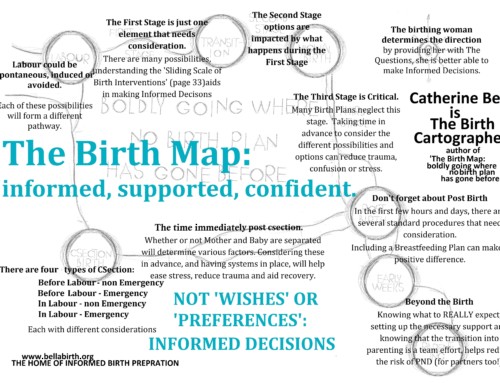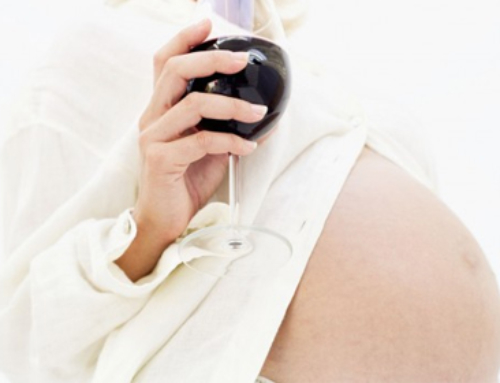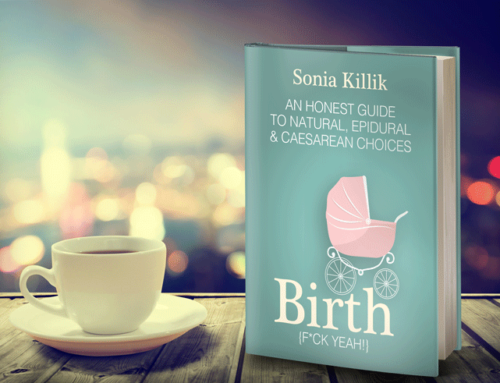However, a response to the article has suggested that the findings are misleading because of the maternal mortality factor. Maternal mortality was not specifically discussed in the study at all (though according to the authors it was included in the overall analysis), but the authors have replied to the concern with information. But first, let’s see what the hoopla is about… The author of the reply has suggested that if the homebirth death rate is not zero, one cannot claim homebirth to be as safe as a hospital birth. I don’t actually follow this line of reasoning to be honest, as birth in and of itself can be dangerous, regardless of location. However, let’s take a look at the data on what the actual death rates were over this period for this low-risk group. There were a total of 5 maternal deaths over 146,752 women; however, two of the deaths were completely unrelated to pregnancy (one was a severe allergic reaction, the other was a fall that led to a cerebral haemorrhage). So we have 3 deaths. Two were in the planned homebirth group (which was comprised of 62.9% of the women), 1 in the planned hospital group (37.1% of births). Here are the explanations of the deaths: One woman gave birth at home at 38 weeks gestation in midwife led care and was referred to hospital in the postpartum period by the general practitioner because of signs of HELLP syndrome. She died the following day due to brain haemorrhage. One woman suffered from sudden collapse during labour, when she was already in secondary care, and died. Although no definite diagnosis was made at postmortem examination, a cardiac cause appeared to be most likely. A woman who gave birth spontaneously was discharged after one day. On the fourth day postpartum she was readmitted because of profuse vaginal bleeding and shortness of breath. She had a sudden collapse and died. Postmortem examination showed sinus sagittalis superior thrombosis. The person who is suggesting homebirth is not safe is specifically focused on the first case. The author argues that this case reflects on the midwife and was a preventable death in the hospital and as such, the claim that homebirth is as safe as in a hospital is unsubstantiated. But first let’s look at the other two. The second death was a planned homebirth but had already transferred to the hospital (in Dutch terminology, secondary care) when she died, but it seems as though the cause was cardiac. I’m not sure we can truly call this a pregnancy-related death but as she was in labour at the time, we shall. (Notably, I’m sure if this woman had been at home when she collapsed, those against homebirth would try to argue it was preventable in the hospital, but clearly we know that not to be the case as this woman was in the hospital at the time of death.) The last death was in the planned hospital group and in said hospital. I don’t know enough about sinus sagittalis superior thrombosis to make any comment on whether or not anyone should have been able to catch this or if it was due to care during pregnancy, etc. I take it as valid that no one could have prevented this. Now to the first death, which is being used to say that homebirth is not safe. This one death. Was the midwife to blame? Was being at home to blame? The authors included this bit of information about the case as well: At 37 weeks she had been sent for consultation to hospital because of upper abdominal pain and headache. Her blood pressure was slightly elevated, she had proteinuria but her blood results were normal. She had been referred back to primary care. All cases of maternal death in the Netherlands are audited in a confidential enquiry. The conclusion of the audit in this case was that the woman should not have been referred back to primary care by the obstetrician and that she should have given birth in secondary care in hospital. The hospital failed her, and that is the conclusion of those who have far more information than us. This woman was not a low-risk pregnancy, but rather a high-risk that was missed by the doctor who did the bloodwork and exam. Her midwife didn’t fail her, her midwife sent her for a consultation to the hospital which failed her. Would she be alive if she’d been in the hospital? Probably but not definitely as we know that women die from HELLP in hospitals too (there is a 1.1% maternal mortality rate for it in the United States[2]). What is certain is that it immediately makes a pregnancy high-risk and absolutely the hospital is the safest place to be. But it certainly doesn’t speak to low-risk pregnancies. What can we say from this study on the safety of homebirth? Well, if we consider the cardiac event death as a valid pregnancy-related death we have a death rate of 2.17/100,000 (1.08/100,000 if that death is unrelated to the pregnancy) and 1.84/100,000 in the hospital group. The difference is not statistically significant and it is not a matter of power (though the author of the reply misleadingly says the study is “underpowered” to find this significantly different). To find this difference statistically significant, one would need a total sample of just under 96 million (48 million per group). The study’s power is fine, it’s that the effect is so tiny and small, it’s not going to be detected. And there’s a term when you do find that you have enough power to detect tiny effects: the finding is said to be statistically but not practically significant. But regardless it’s neither here. Thus we have no differences in death rates in low-risk pregnancies and the remainder of the data shows that other measures of maternal morbidity favour homebirth. Sadly one woman died who most likely would have lived if she had been properly diagnosed by the doctor at the hospital and then birthed at the hospital as a high-risk pregnancy. It’s a travesty, but just as we don’t say that people should thus stay away from the hospital because a doctor erred, we also can’t say that homebirth is unsafe because of a hospital’s mistake. Just a final aside, the Netherlands has the highest rate of homebirth in the Western world and a system that is midwife-led while obstetricians take on high-risk pregnancies and any complications that arise, they also have an overall maternal mortality rate of 6/100,000. The US has a maternal mortality rate of 21/100,000. Which system is safer for women? [Image Credit: “The Birth of Cupid” by Master of Flora]
[1] de Jonge A, Mesman JAJM, Mannien J, Zwart JJ, van Dillen J, van Roosmalen J. Severe adverse maternal outcomes among low risk women with planned home versus hospital births in the Netherlands: nationwide cohort study. BMJ 2013; 346: f3263, doi:10.1136/bmj.f3263. [2] http://americanpregnancy.org/pregnancycomplications/hellpsyndrome.html As many of you know, a recent Dutch study
As many of you know, a recent Dutch study
Homebirth, the Dutch Study, and Maternal Mortality
[1] was conducted looking at all low-risk pregnancies by planned location of birth and found that a planned homebirth was as safe or safer than birthing in a hospital. Of course, this data only pertains to the Netherlands in which homebirth is more common than a hospital birth and midwives are the primary caregivers for all low-risk births. The system there is fully integrated with midwives and doctors working together instead of in competition (as you rarely see a doctor unless you have complications or a high-risk pregnancy), and frankly it’s a system I wish every country had.






I hadn’t read this, but have read similiar ones and am always flabbergasted that a women dies in a hospital after being transfered or risked out of midwife care…and they still lump it as a ‘homebirth’ death. Even the one death you’re having to ‘defend’ doesn’t sound like a homebirth death to me, nor are any of the others. They all died, in the hospital, in a doctor’s care, after issues were properly caught by a midwife. No one apparently died *at home* or during transit before arriving at the hospital. Counting those as homebirth related deaths would be like counting a death of someone undergoing surgery on their general doctor as opposed to the surgical staff because, theoretically, the general doctor could have caught the problem and refered the person to a specialist earlier in the course of the illness. The only time I’ll take a maternal death against the midwife model of homecare is a death that happened *at home* or *during transit* and assuming the death could have been prevented by hospital care. If a midwife watches a mother bleed out and doesn’t call 911 and the woman dies, then that could reasonably be a homebirth death, not that women doen’t die of hemorage in the hospital, but that the hemorage has many more possible treatments in the hospital. But if a midwife notices excessive bleeding and gets the mother to the hospital and after trying everything they can the mother still bleeds to death, 6 or 7 hours later at the hospital, that’s an (probably) ‘unavoidable’ death that occured *in a hospital*, not a homebirth death. I remember reading one study, I don’t even remember the name, but where a women and all subsequent complications to she and babe were placed in the ‘homebirth’ category if they had seen a midwive at any point in their care. So all those women who had started care with a midwife and then were risked out or changed their minds at 12, 20, 30 etc weeks and were then cared for, delivered, and post-partum-ed in a hospital were still ‘homebirth’ statistics because they’d had a referal by a homebirth or birth center midwife. It’s as dishonest as counting abortion deaths as ‘maternal mortalities’ and then turning around and using ‘maternal mortalities’ to argue abortion is ‘safe’ (don’t know about Canada but the way U.S. deaths are coded this happens).
I agree, but I also know the reason for planned comparisons are that otherwise it might all show hospital births. HOWEVER, if someone has been in the care of the hospital for hours, it’s a hospital birth, but I think it’s great these authors provided data on the actual deaths. It lets us, the reader, know exactly what happened and we can judge for ourselves the relative risk.
Jespren if someone has a car accident but dies in a hospital. It s a hospital death or as a result of an car accident. What this author fails to mention is in that same study it was only shown to be as safe or safer for the wealthier women. The women living in lower income areas had a much higher than normal infant mortality rate compared with the lower income women giving birth in hospital. Any article can be twisted to agree with your argument. To me (living in Holland) its not worth the risk that something could go wrong just so that Im more comfortable.
Nichole, this particular study is about *maternal* mortality, not infant mortality. But Jespren’s point was that the decision of how a death is classified should be based on what is reasonable – as you said, a car accident victim isn’t a “hospital death” but in homebirth, sometimes the mom transfers just fine and baby dies in hospital – not through something done at home. This shouldn’t be a home death, but is classified as one when we use intent as the classification category.
I don’t get why someone without a medical degree should be allowed to give birth to a baby.
it’s like flipping a coin.
You realize that for hundreds of thousands of years, people gave birth with midwives. Doctors learned how to birth babies from midwives…
Have you check the death rate of babies back then?
Or better yet how many times Doctors have saved mothers and babies after serious complications?
Two things:
1) Of course doctors play a role in the maternity system. They are life savers for high risk and complicated pregnancies. But often their training is so focused on complicated pregnancies, they don’t have the training to just let normal pregnancies progress.
2) There is research on infant mortality that finds low risk pregnancies birthing in a hospital by a midwife have the lowest mortality and morbidity rates (over that of a doctor). Sadly too many interventions can actually cause the negative outcomes we are trying to save with modern technology.
Whenever I see someone throw ‘do you know how many women/babies died back then?’ in a debate on midwives vs doctors all I ever hear is ‘I’m really bad a history’. With the adoption of germ theory, discovery of antibiotics, and steady improvement in overall hygeine and nutritian maternal and neonatal death rate was steadily decreasing at the hands of midwives. Then doctors started becoming more common and birth moved towards the hospital and the death rate spiked. Childbirth fever (caused by doctors refusing to wash their hands) became a common affliction. Still most women gave birth with a midwife, whose death rate was significantly lower than doctors. Doctors, who were male and in the upper class, used their own inflated death rate to lobby both the public and lawmakers into seeing childbirth as something so dangerous it should only be attempted in the ‘modern’ hospital. Laws banning midwifery sprang up, the death rate rose as mothers turned to hospitals in droves. Only afterwards, after their competition had disapeared, did the childbirth rate again start falling as doctors (finally) adopted germ theory based handwashing and hospital sanitation policies and the general increase of medical knowledge allowed the maternal/fetal deathrate to return to previous rates and then beyond. But if we’re basing out concept of ‘safety’ on death rates before the full adoption of germ theory and the advent of truly modern medicine (anticeptics, antibiotics, antipyretics, etc) then the midwives win hands down.
Nevertheless homebirth isn’t safer for the babies. The neonatal death rate in the Netherlands is significantly high in comparison to most other European countries. Homebirths in the Netherlands are rapidly declining because of this. Unfortunately women occasionally still have to fight for the opportunity to birth in a hospital and beg their obstetricians to risk them out of midwife care. It’s outrageous. These women don’t want to birth at home and put their babies at risk. Nobody should make them do it.
Yes and no. Earlier data found that the Netherlands had a high risk of neonatal death (although the factors contributing to this seemed not to be homebirth, but rather older maternal age and greater multiples). However, the most recent analysis has found the Netherlands have moved into the middle of the pack. It’s noteworthy that the most medicalized of births – France – has remained with the highest neonatal death rate in Europe for years.
I do, however, agree that women should have the choice as to where they birth. It should not be forced either way.
Tracy, i agree with you! I come from Panama. ..raised in the Netherlands and gave birth 1year and half ago to a healthy son in my sleeping room. I was also lucky to have a quick Labor of 4hours and of course an amazing midwife. Doctors have a robotic way to do things without thinking how the other person is going to react with their mixed emotions. And this can influence to their child. I hope on my second child will be that lucky as well. I love Dutch system of birth
I also gave birth a year ago in the Netherlands. I had planned a home water birth, I was low-risk. My waters broke which meant that I wasn’t allowed my waterbirth anymore and 24 hrs later I had to move to the hospital. I almost bled to death, right under the nose of the medical staff.
Later I asked my first midwife (she came to check on me postpartum!) about what if we stayed home for birth. She said they are medically trained (not like a doctor but specifically for anything that can happen) and that the suitcase that she carries to every birth has everything she could need in case of an emergency. If i was overbleeding she would have given the same treatment as in the hospital, perhaps faster.
One more point, the Netherlands is a very small country. Tiny! Almost everywhere you live in the Netherlands you are between 5 minutes at best and 25 minutes at worst from a hospital. Me I could have chosen between 4 hospitals between 7-15 minutes by car.
Thank you for sharing. My midwives here in Canada had the same “black bag” 🙂 And we were about 7-10 min from the hospital. I do feel that proximity is needed to make homebirth as safe as possible. If you did it again, would you go for a homebirth again?
I would still chose for a home birth as a second birth. It may sound a little crazy but I’m pretty sure the medical staff at the hospital screwed up and if that wasn’t the cause of my ‘issue’ that it certainly added to it. Sadly with my history I’m now considered high risk and no midwife will even consider taking me. Although my plan for baby nr2 is to go to a midwife for the appointments, a midwife that can double as a douala at birth. This way I will at least know someone supportive (besides my husband) there, seeing as how the gyn and nurses are random (to me!).
I had my first baby at home in the UK, about 5 mins away from hospital and it was the beautiful home birth I had planned for. I even delivered in water though I had planned to get out before baby was born. There were 2 certified midwifes and a student midwife plus a doula present at this birth. As my little one was surprisingly tiny and could not hold his temperature we were transferred to hospital over night and on night number 3. The doctors were the ones who performed the scans and had missed that he was going to be tiny (born at 38+2 weighing 4lbs 10oz). The head midwife ordered the transfer and called an ambulance even though there was no immediate danger. Midwifes do not take risks during or after homebirth. In hospital I was all by myself with a newborn and nobody coming to check on us, and without any lactation help, despite having asked continuously. It was ridiculous, as I was in hospital but nobody ever checked baby’s temperature again or did anything for him or me. My second pregnancy was largely in the US (Texas), and I had to grudgingly plan on a birthing center over home birth as the home birthing midwife had no right to hospital transfer (which the birthing center midwifed did). Also my US insurance wouldn’t have paid for a homebirth and the hospital was more than 45 minutes away from home and only about 20 minutes away from the birthing center. In the end I decided to return to my home country Germany 30 weeks pregnant to have a homebirth again, amongst other reasons. This homebirth took place with 2 certified midwifes, again about 5-10 minutes from the nearest hospital. It was again a straightforward birth with absolutely no injuries to either my baby or me. All, and I mean absolutely all, of my friends who had planned hospital births ended up with complications and injuries, either with a C-section, a huge tear, postpartum bleeding or placenta not detaching, with a decent proportion also suffering from PND. Of course the sample set of my friends will not be big enough to power any statistical test.
Hi Tracey , I was born in the Netherlands and my mother gave birth to all 6 of us at home. In fact I remember waiting on the stairs while she was in labor with my brother when I was 3. We migrated to Australia when I was 6 and I have lived here ever since.
I trained as a nurse and midwife. But when I became pregnant the first time I decided to have my own obstetrician who I worked with and liked ,I knew he had a high percentage of natural births.. Only problem was he went away on holidays and I ended up with his partner who i knew did not have a good rate of natural vaginal births. Forceps was his forte. (at that time I did not know that I could have chosen another Dr. So I ended up with a forceps delivery. This caused me great disapointment. So when I found myself pregnant with my 2nd daughter I looked for another way. The hospital did not, at that time have midwife only deliveries.
So I joined a group of unhappy birthing women and we started a natural birthing group. We met with both local hospitals and campaigned for more choice in how we gave birth. We didn’t seem to get far so I decided to have a home birth.
My obstetrition said he would deliver my baby at home.(he assured me he would be there.) I can’t describe what a wonderful experience this was. I had my husband and my sister in law (midwife) and the obst came when I was in full labor. One of my best memories were after my daughters birth the placenta took a while to come and all the support people were sitting on the floor having a cup of tea. We were gooing over the baby and telling jokes. It came naturally not long after.
Needless to say I had a homebirth with my son and again it was wonderful, painful but wonderful. I also breastfed each child for 14mth, 24mth and 36mth. (he was my last baby, it was hard to quit,LOL)
My children now are 35,33,31 and I have heard all the naysayers of homebirth state their statistics for years, but it is still the safest way to have a baby, as long as the pregnancy is risk free and there is a plan in place for any emergencies as there is in any labor ward. Mind, some of the birthing units I have worked in certainly offer much better choices now compared to long ago, especially if midwives run the units.
[…] fully integrated with midwives and doctors working together instead of in competition” (more here). Everyone I know personally has a midwife, not an OB/GYN – but midwife does […]